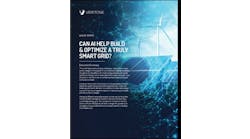By Elisa Wood
December 11, 2008
Some days I’d like to throw my front-load clothes washer out the back door. But that probably won’t be necessary because it may walk out on its own.
The LG product shakes and rattles so much in the spin cycle that it ‘walks’ several inches across the floor each day. One guest to my kitchen thought we were experiencing an earthquake. Sears repairmen have visited twice, but tell me nothing is wrong with the machine: front loaders just do that. In fact, one repairman confessed that he’s called out to homes “all the time” because of these over-agitated beasts.
I spent several hundred dollars more on this machine than I would a conventional washer that loads clothes from the top. I was willing to do this because front loaders are more energy efficient. They use about one-third as much water as top-loading machines. That translates into less energy needed to warm the water. Front-loaders also spin faster, removing more moisture from clothes so that they require less time in the dryer.
The machine includes sophisticated electronics and can perform all sorts of tricks — from automatically measuring the size of laundry load to singing me a sweet song when the cycle is over. But I eye its friendly R2D2-like exterior warily. How soon before all of the rattling and rolling breaks the delicate electronics, and I have a hefty repair bill?
Several months after I bought the machine, Sears advised that the machine might stop shaking if I shored up the laundry room floor from below and replaced the linoleum with tile. Sears sales folks did not tell me before I bought the machine that its successful use required home remodeling.
Supposedly, a next generation front loader will be released shortly that does not try to escape its owners. I’m not sure what good that does me – and so many others – who already put down our hard-earned cash on today’s poor design.
I write this not to whine about my purchasing misstep, but to point out the dangers that faulty products cause the green energy movement. We’ve been down this road before. In the 1980s, when high oil prices piqued consumer interest in renewable energy, the industry rushed solar panels to market without properly training installers. Many roofs leaked. Renewable energy became associated with poor quality. Today, the solar industry wisely puts a great deal of effort into proper training of installers and product warranties. Solar panels, in fact, are now associated with quality custom construction. But it took years to restore consumer confidence.
Energy efficient appliances risk the same backlash if they take advantage of our desire to do the right thing. Consumers are willing to pay more for greater efficiency; their willingness will falter if energy efficiency becomes associated with inferior workmanship.
The stakes are high. In the not-too-distant future the auto industry is likely to offer the plug-in hybrid vehicle. A source I interviewed recently pointed out the enormous damage to public confidence that will occur if the plug-in hybrid is introduced before its battery is perfected. Not long ago several million laptop computers were recalled because their batteries overheated and sometimes caught fire. Imagine the consumer dismay if several million plug-ins cars – far more expensive than laptops — were recalled ? I am as eager as anyone to fuel my car by plugging it into an electric socket. But I do hope the auto industry takes its time overcoming the difficulties of perfecting the battery and gets it right before marketing the cars.
The public supports green products now more than any other time in our history. We may think that this support is rock solid. I’m not so sure. My front-load washer could rattle anything.
Visit Elisa Wood at www.realenergywriters.com and pick up her free Energy Efficiency Markets podcast and newsletter.





